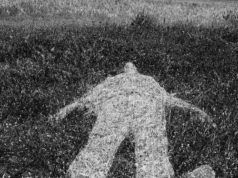
The Year and a Day rule required that the death of the victim must have occurred within 366 days of the attack in order to be ruled a murder. The Year and a Day rule has fallen out of favor with the advent of advances in medical technology, especially advances in life support.
A Year and a Day rule prevented the prosecution of murder cases based not on the merits of the case, but because of an increased ability of doctors to prolong the lives of their patients. Advances in the forensic sciences have also allowed investigators to identify cases where the primary contributing factor in an individual’s death was perpetrated years in advance.
The application of Year and a Day rules vary from jurisdiction to jurisdiction. New Zealand still follows the Year and a Day rule. England and Wales require a dispensation from the Attorney General before prosecutors are allowed to file murder charges against individuals if the act which is believed to lie at the root of the death happened more than three years prior to the individual’s death.
In Hong Kong, prosecutors do not require any special permission from the Secretary of Justice to prosecute offenses. Permission to prosecute a charge of murder is also required when there has already been a conviction for the underlying crime.
In the United States, the legal status of a Year and a Day rule is uncertain. Many states have repealed laws preventing the prosecution of murders caused by acts a year and a day before the death. In 2001, the Supreme Court ruled that prosecutors could pursue murder charges not previously allowed. The Supreme Court ruled that these prosecutions did not violate the ex post facto provisions of the United States Constitution.
Rogers v. Tennessee determined that the common law standard that the crime and the death had to be within a year and a day only made sense when medicine and forensic sciences were still primitive. Invoking the reasonable person standard, the Supreme Court ruled that otherwise beneficial medical advances should not prevent the execution of justice.
Despite the 2001 Supreme Court ruling, however, the fact that the United States has a common law heritage which includes a Year and a Day rules has continued to be invoked by individuals facing murder convictions as a successful appeal for why their convictions should be overturned. These successful appeals continued for several years following the Court’s decision in Rogers v. Tennessee.
The abolition of the Year and a Day rule does not relieve the prosecution of its burden to prove the commission of a crime. In fact, it may make the prosecution of murder cases more difficult because unlike in other cases there may not be an immediately clear chain of causation between the death of the individual and the attack which the prosecution is attempting to prove caused the death.
In other cases, where the death occurred at the scene of the crime, it is easy to prove cause and effect between the violent act and the death. When the deceased has been comatose for a decade, it may be less immediately apparent that the violent attack was the cause of death.




























